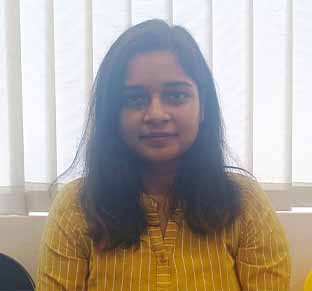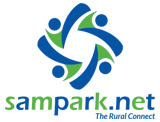Nivedita Kashyap, Executive, PRADAN
The Road Less Travelled
Lush green fields, smiling faces, an open sky, and warm, grounded colleagues—my first impressions of PRADAN and the development sector felt like a dream come true. I had always wanted to do something different, something meaningful. I wanted to contribute in whatever way I could. Where exactly? I was not sure. At that point, my understanding of development was still evolving. I didn’t know the precise area I wanted to work in, but I knew I wanted to be somewhere I could make a positive difference to society.
Back in school, I gradually became aware of the privilege I held. While I travelled to school by bus or car, others rode bicycles. While someone came to my house to help with chores—only to return to their own home and do the same for their family—mine could rest. I often noticed these differences, but I didn’t yet have the language or understanding to make sense of the structures behind them. Every now and then, I would talk to my parents about it. They understood my discomfort but would usually respond with, “Life is like that, unfair sometimes. Everyone has to go through different struggles.” I would fall silent, unsure of what that really meant. But over time, I began noticing these contrasts everywhere. They planted the first seeds of awareness in me, that we live in a world shaped by invisible structures and unequal realities. Somewhere deep inside, a desire began to grow: a desire to support others in some way. But I didn’t yet know how or even what that would look like.
Choosing the Unconventional
While my peers pursued degrees in engineering, medicine, or other conventionally “successful” paths, I stood at a crossroad. I chose Arts—a decision neither popular nor widely accepted in the society I came from. To many, it seemed like a path destined to fail. The general perception was that Arts lacked the technical rigor of science or commerce streams, offered limited employment opportunities, and attracted students who were often seen as “not bright enough.”
A Bachelor’s and then a Master’s in Journalism and Mass Communication gave me some clarity, at least about what I didn’t want. I realised I wasn’t drawn to the fast-paced world of breaking news, prime-time debates, or the pressure to chase sensational headlines. The coursework exposed me to different facets of media, and while I valued the power of storytelling, I found myself gravitating more toward stories that explored everyday lives and structural issues, not just surface-level events. I wanted to understand people’s lived realities, not just report on them. Somewhere along the way, I began searching for something deeper, something that would connect me directly to the ground, to people’s struggles, aspirations, and triumphs, in a more sustained and meaningful way.
In my second semester in 2020, I took a course titled Media and Society—and something clicked. It was the first time I paused to think critically about the role of media beyond newspapers and television screens. We explored how media shapes public opinion and discourse, reinforces or challenges power, and influences access to rights and dignity. I found myself drawn to stories that weren’t loud but were necessary. I began reading ‘Everybody Loves a Good Drought’ by P. Sainath, a book that unsettled me and shifted the way I saw rural India, not as a passive recipient of aid, but as a space full of resilience, complexities, and transformation.
Courses like Development Communication and State and Society in India opened up more doors. I learned how policy, representation, and inequality intersect, and the various roles the media plays in the lives of the underserved. These were more than just academic ideas. I began seeking stories in footnotes, voices in bylanes, and meaning in the everyday choices people make to survive and assert their dignity.
Slowly, a sense of direction began to take shape. I realised that my role might not be to speak for others but to listen better, to tell stories responsibly, and to become a bridge between knowledge and action. The idea of communication as a tool for social change stopped being a textbook definition and started becoming something I could live by.
Something Changed in Me
Curiosity soon turned into intent. I started reaching out to my professors, researching the development sector, and speaking with professionals in the field through friends, alumni networks, and even by randomly messaging people on LinkedIn to understand how the sector actually works. That’s when I came across the Citizens for Public Leadership (CPL) Fellowship—a 10-month, part-time program that brings together individuals from diverse fields like Arts, Science, Law, and Public Policy. Designed to encourage civic engagement and policy literacy, the fellowship offered a structured space to explore critical issues in governance, development, and social change.
As a part of the program, we participated in lectures and group discussions led by practitioners, academics, and policymakers. Each session was anchored in pre-readings ranging from academic papers and books to documentaries that encouraged us to engage with topics like rural development, infrastructure, urban planning, and the role of the state. For the first time, I was surrounded by like-minded individuals who were asking the same questions that had been simmering inside me. These conversations helped me find answers to many of my questions and erase the doubts that shrouded my mind. It wasn’t just a learning space, it felt like a rehearsal for the kind of work I wanted to do.
The End of My Master’s Journey
As my fellowship continued, the final semester of my Master’s program approached. Around me, classmates scrambled for placements, some had already secured their dream jobs. I, however, still remained uncertain. Corporate roles didn’t feel like the right fit, yet I wasn’t entirely sure if the development sector was my calling either.
Tentatively, I started applying. With no clear roadmap, I sent out applications to several organisations in the development sector—hoping to find a space where I could learn and contribute meaningfully. That’s when I came across a communications-related role at PRADAN, honestly, through a random LinkedIn suggestion. I didn’t know much about the organisation then; it was one of those dekhte hain (let’s see) moments. I applied without much expectation. So, when I received a callback, I was surprised. Pleasantly so. That’s when I began to look deeper, reading up about PRADAN’s work and its approach, and reaching out to friends who had some familiarity with the organisation. At the time, I wasn’t particularly aware of its legacy or the scale of its work; I was still exploring, still figuring things out. But something about it drew me in, and I decided to go ahead with the process, unsure of where it might lead.
One conversation led to another, and before I knew it, I had cleared the rounds. I reached out to a few friends from my fellowship program who had either worked with or knew about PRADAN, hoping to get a better understanding of the organisation. The feedback was encouraging, they spoke of the field immersion, the close work with communities, and the chance to grow through real grassroots engagement. That was enough for me to take the leap. I joined PRADAN—not with certainty, but with a strong sense that this could be the beginning of something meaningful.
Reality Check
I joined PRADAN with a heart full of hope and idealism. But reality came knocking. Development isn’t a straight road—it’s messy, complex, and often painfully slow. Through countless conversations with colleagues, observations from the field, and moments of doubt, I began to see that even working in the same village for years doesn’t always bring immediate, visible change.
As someone in communications, I wasn’t the one constructing check dams or mobilising SHGs. My work was less visible but no less vital. I became a bridge between people living in the margins and those who have the power to shift the margins. My job was to make their stories travel. To write, design, film, and craft narratives that could cut across contexts, geographies, and mindsets. To help someone sitting in a corporate boardroom or a policy meeting feel the monsoon joy of a farmer in rural India, or the courage of a young woman leading a Village Organisation meeting in a remote village.
And that, I’ve learned, is no easy task.
It’s hard to do justice to these stories because they are not just stories. They are lives being lived, dreams quietly nurtured, histories of struggle slowly being rewritten. Most of the time, I’m not even writing first-hand accounts. I’m reworking narratives shared by colleagues in the field, piecing together voices, expressions, and moments that I haven’t witnessed myself. And that makes it even more challenging—how do you honour someone’s lived experience when you’re experiencing it second-hand? Every time I hold someone’s narrative in my hands, I feel the responsibility of representing it with honesty, empathy, and dignity. But how do you carry the weight of someone’s truth in a one-minute video? How do you ensure a donor doesn’t just see numbers but feels the nuance? How do you convince the world that this work—slow, local, painstaking is worth it?
There’s also the constant challenge of attention. In a world flooded with viral reels and quick takes, how do you make rural transformation part of the mainstream conversation? How do you compete with the noise of trending hashtags to make space for stories that truly matter? I often find myself writing and rewriting captions, wondering if I’ve struck the right tone—clear but not simplistic, moving but not sentimental. I worry about aesthetics and accuracy, reach and resonance.
And amidst all this, there are meetings. With donors, government officials, and media professionals. Each comes with their own lens, their own way of seeing value. My task often feels like translating lived reality into something legible across languages and worldviews. Helping people who may never visit these villages experience something of what’s happening on the ground through the flicker of a short film, a carefully worded report, a photo that holds both grit and grace. Sometimes they do feel it and when they do, it’s magic. But many times, I’m left wondering if anything landed at all.
Internally too, the hustle never stops. Teams reach out with their priorities, an event to promote, a job to advertise, a report to polish, or an article to re-write. Everyone’s story matters, and each request comes with a sense of importance and immediacy. I find myself constantly juggling, trying to give equal weight to each voice, each ask. And in the midst of it all, I often forget to pause and ask myself: am I okay?
Even outside work, explaining what I do isn’t easy. “So… what exactly do you do?” someone would ask. Or worse: “Yeh sab shaukh ke liye kar rahi ho? They actually pay you for this?” These are not just harmless questions. They mirror my own hidden doubts—and the judgment society holds for those who walk off the beaten path.
There are days when the uncertainty feels heavier than I could carry. Days when I wonder if I have made the right choice.
Confiding in Others
I also often wondered how my colleagues, who had been in the sector for 20–25 years, had sustained themselves. Had they too felt uncertain? Questioned their choices? Wondered if they could’ve done more—or something different?
Were they also living in between the lines? And if yes—how did they survive it? Because I can tell you this much: it takes everything out of you.
But slowly, something shifted. Not like in the movies, where the protagonist has an epiphany and everything changes. This was quieter. Two steps forward, one step back. But movement, nonetheless.
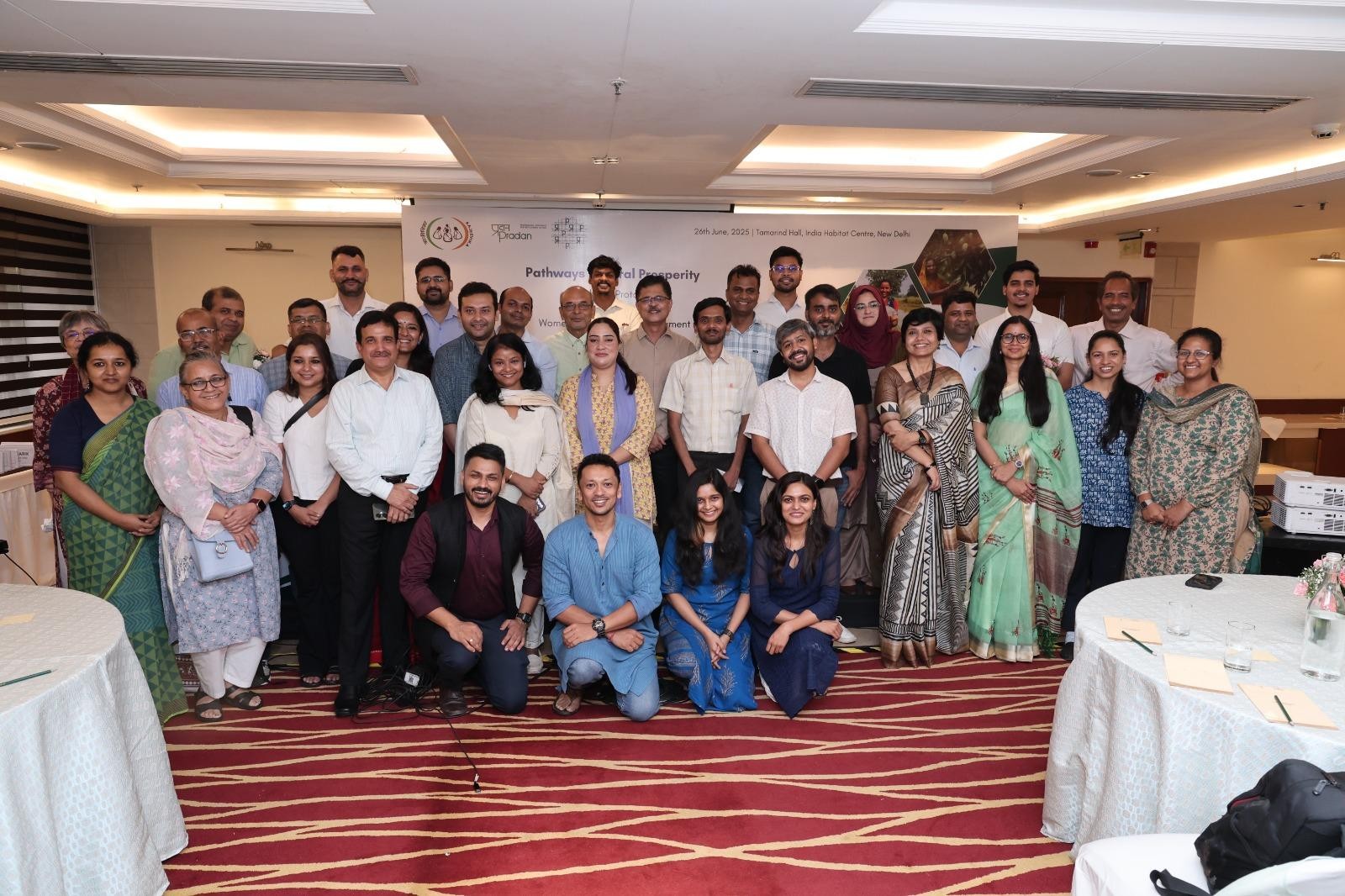
Photo: Nivedita at an event with her fellow colleagues
The shift came in unexpected ways. It happened during interviews, when women shared stories that made me sit in silence long after they had stopped speaking. It happened when a colleague called just to say a short film had moved him to tears. And it happened in conversations with seniors, people who had spent decades in this field—who, even after all these years, still got excited about a new initiative in a remote village or a breakthrough in a panchayat meeting. Their eyes lit up while describing a woman farmer who negotiated with a block officer or a young college student who asked a bold question in a placement drive.
They didn’t sound tired. They sounded alive.
And somewhere in between those moments, I began believing that maybe this work never stops giving, if you know how to see it. Maybe the exhaustion is real, but so is the joy. And maybe the reason they had survived so long wasn’t because they never doubted themselves but because they kept finding reasons to begin again.
I started noticing how they spoke about their work; with ease, confidence, and purpose. Their stories weren’t boastful; they were grounded, warm, and real. Watching them speak on panels alongside policymakers and field experts, I realised; they were the experts. They were the stalwarts. And I wanted to be like them.
Field Visits: An Added Charm
Although my visits to the field have been few and far between, they’ve left a lasting impression on me—memories I still return to often. Meeting community members and colleagues on the ground brought an entirely new dimension to my work. Those moments were grounding. They reminded me of why I chose this path in the first place. Life in the city often feels like a race; relentless and exhausting. But in the field, time slows down. There, I glimpsed what it means to live with purpose: to be useful, to be grateful, and to be present. Even today, when the work feels overwhelming or disconnected from its impact, I go back to those memories. They continue to guide me forward.
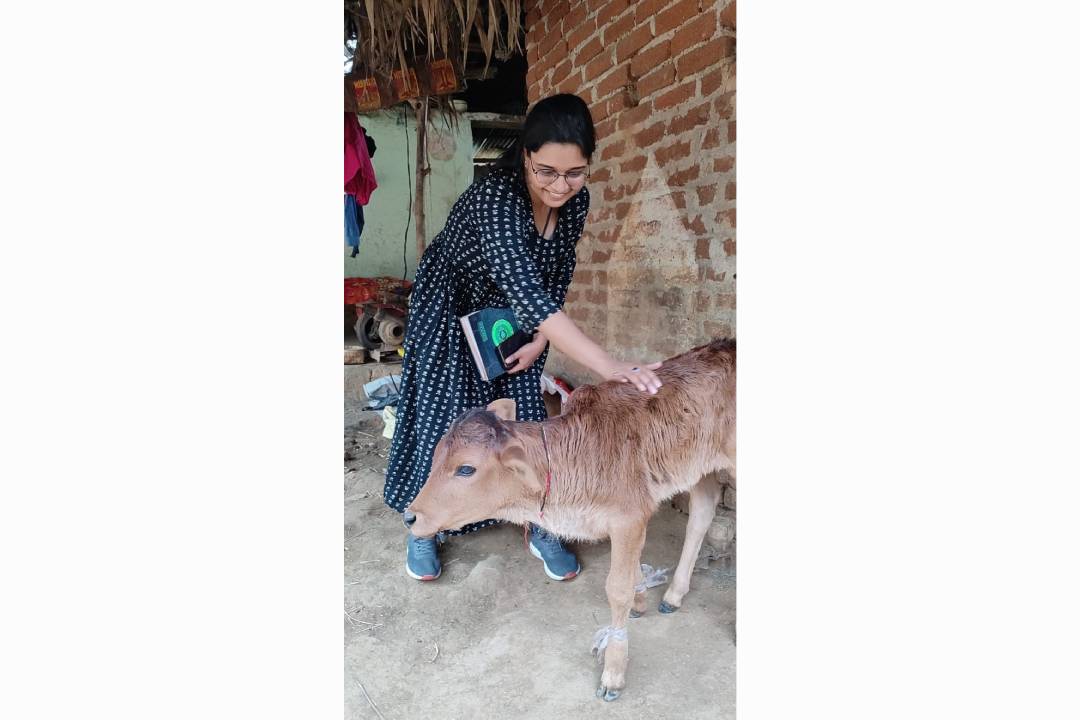
Nivedita, during one of her field visits
While I haven’t yet had the chance to plan more field visits, it’s something I deeply hope to prioritise in the next phase of my journey. I know that’s where the real learning lies and the inspiration I continue to seek.
What I’ve Learned
While I’m still relatively new to the sector, I try to speak with those who’ve been here much longer. These conversations have shaped my understanding of my role, not as someone who’s here to “improve” lives, but as a facilitator. One of the most important lessons I’ve learned is that change doesn’t come from me; it comes from within communities themselves. My role is to hold space, to support, to walk alongside as they build their own capacities. And truthfully, more often than not, I find they possess a strength I can only aspire to.
Every day in this role is a learning experience. And every day, a new story from one of the didis amazes me. I still remember when I first received the story of Etwari Didi from Torpa, Jharkhand, it came to me as a draft for a social media post from one of our field teams. At first, it was just another task in my inbox. But as I read through it, I paused.
In 2023, Etwari Didi stood up and spoke in front of the Honourable President of India, Smt. Droupadi Murmu, with clarity, poise, and quiet confidence. She shared how being part of the FPO—’Torpa Mahila Krishi Bagwani Swawlambi Sahkari Samiti Limited’ had transformed her life, and how she was now helping improve the financial and social conditions of tribal farmers in Torpa, Khunti district https://www.facebook.com/pradanofficialpage/videos/262283053127186).
The event, Mahila Sammelan evam Mahila Swayam Sahayata Samooh ke Saath Charcha, was organised by the District Administration of Khunti and the Ministry of Tribal Affairs, Government of India. Even though I was not present at the event, reading her story left a deep impression. She spoke of how women leaders like herself were not only driving financial progress but also sparking wider social transformation in their communities. It was a powerful reminder that even through a brief social media post, a story can carry immense depth, dignity, and inspiration.
I often think to myself, “I don’t think I could have done that.”
Or Turlen Dhan didi speaking at an event in front of people from the administration department talking about mango cultivation and saying ‘Aam ki kheti kar kar ke khaas bann gae hain” (Buy cultivating mangoes, we have become special with time). The happiness, the conviction, and talking in front of the senior most officers in the country with such simplicity makes me wonder and go awe from time to time.
Sometimes, even these stories begin to feel ordinary. Like that line from Modern Family: "You fall in love with someone extraordinary, and over time, they become ordinary." But I live for these goosebump moments.
And when I’m buried in drafting campaign plans, editing reports, or measuring engagement metrics—it’s these stories that bring me back. A single phone call with a colleague fresh from the field, or a photograph of a woman farmer proudly standing beside her first harvest, these glimpses remind me that behind every number, every communication piece, there’s a real life, a real shift. They help me reconnect with the purpose behind the pixels and paragraphs.
The Path Ahead
I still struggle to answer, “What do you do for a living?” I still stammer. But I’m learning. I’m growing. I’m standing a little taller each day.
Validation still matters—I’d be lying if I said it didn’t. But now, when someone asks thoughtful questions, when they genuinely want to understand, when they admire the courage it takes to choose this path, it softens the self-doubt.
And of course, the community members. Their smiles. Their strength. Their resilience. They teach me more than any textbook ever could. I carry their stories with me.
The road ahead is still winding. But I’ve made peace with not having all the answers. I just have to keep walking with curiosity, compassion, and a little more courage every day.
A Growing Sector with Space for All
When I first joined the sector, I thought it was a narrow path meant only for a few with some elusive moral clarity or strength. But over time, I’ve realised the opposite. The development sector is vast and growing, it welcomes people from all kinds of backgrounds, disciplines, and motivations. Whether you’re driven by compassion, policy, systems thinking, or community organising, there’s space here for everyone. People go on to design programs, inform public policy, mobilise communities, support in building sustainable enterprises, or simply hold space for others to grow. What unites them is the role they play in enabling change, not by providing all the answers, but by facilitating dialogue, co-creating solutions, and helping communities reclaim their agency. It’s not about fixing people’s lives. It’s about walking with them as they shape their own.
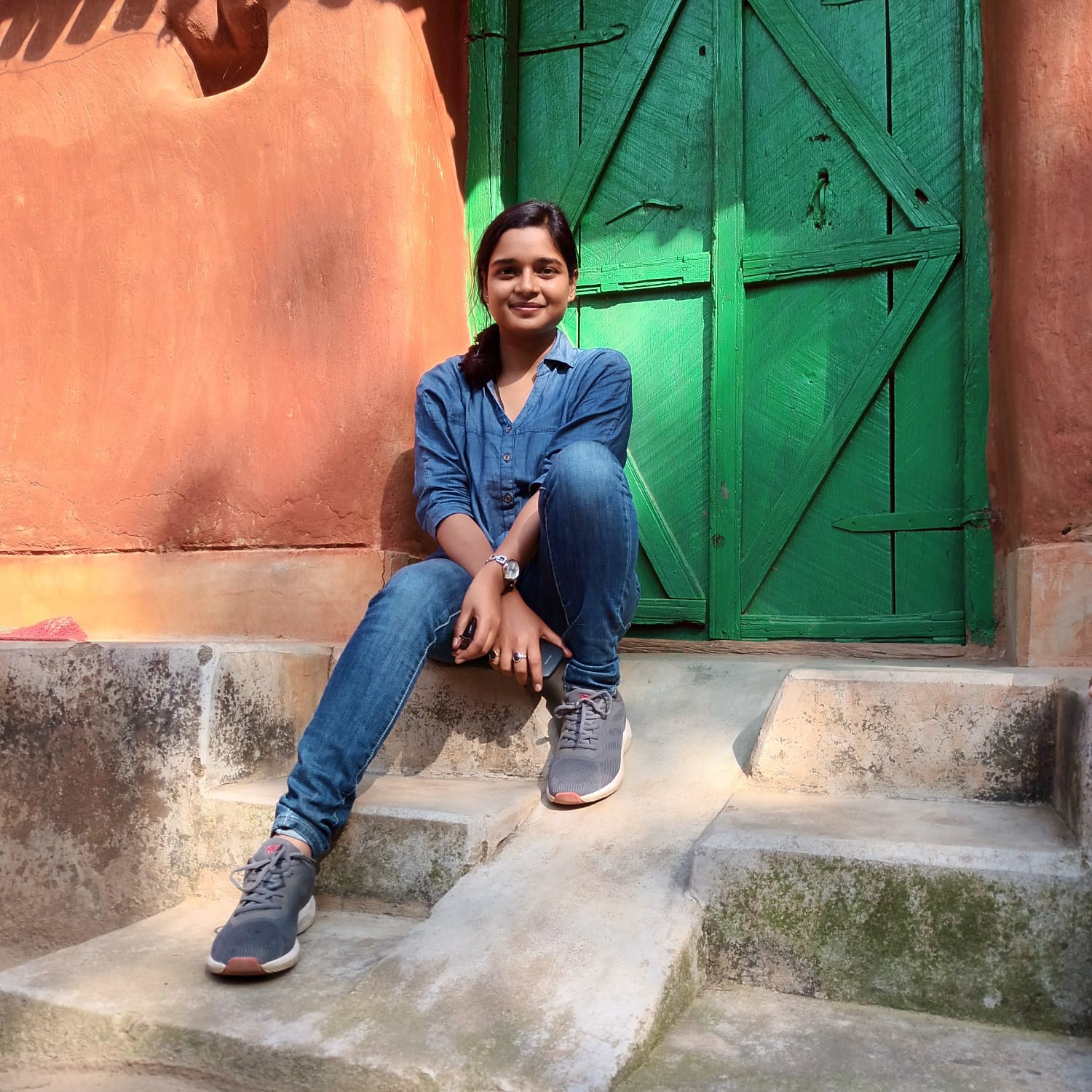
Photo: Nivedita during a field visit in Torpa, Jharkhand
From grassroots NGOs to government partnerships, philanthropic foundations to CSR arms; this ecosystem is richer than I’d imagined. And while it isn’t perfect, it offers something rare: a chance to work with dignity, in close touch with real people, where impact is both immediate and deeply human.
So if someone reading this is at a crossroads like I once was, unsure of what comes next, maybe this sector could be part of your story too. It’s not easy. But it’s real. And it’s worth it.
About the Author
